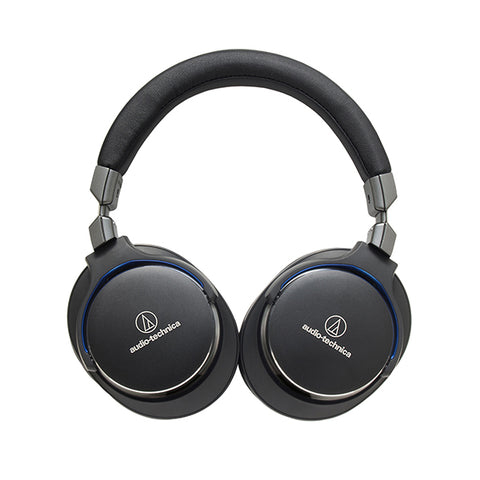Audio Technica ATH-M50X vs ATH-MSR7 Comparison Review
by: Audio46 Headphones
|
Press Ctrl+D to bookmark this page
Link copied to clipboard
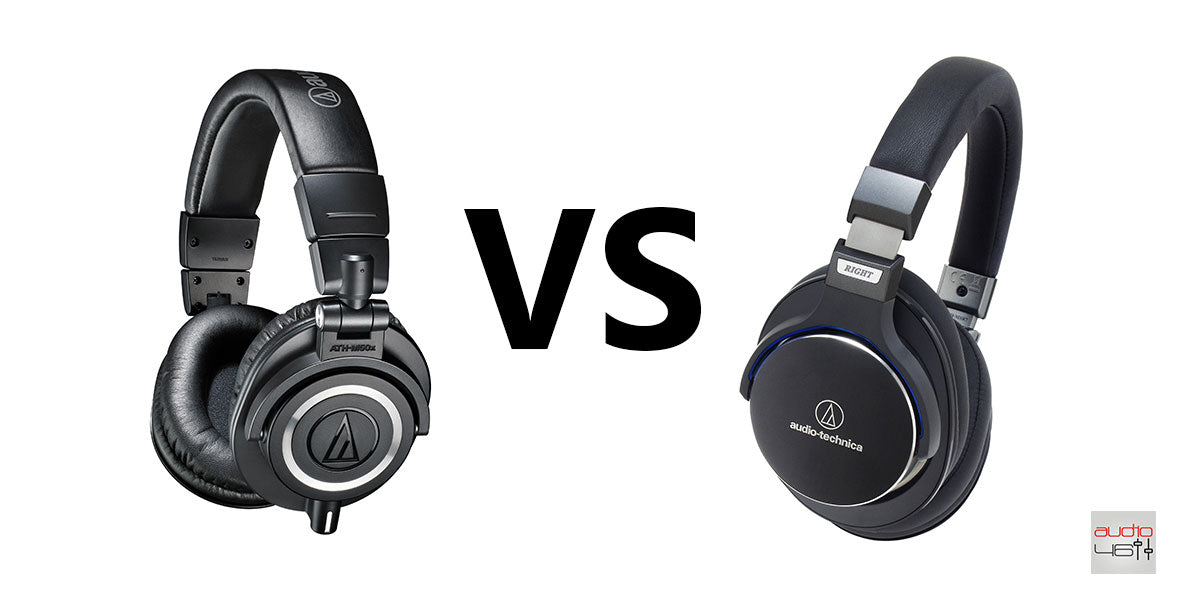
When it comes to a great amount of detail at an affordable price, we here at Audio46 see a lot of customers flocking to Audio Technica – and with good reason. If performance on a budget is your end goal, your search may well end with Audio Technica, whose ATH-M50X and ATH-MSR7 models may offer the most bang for your buck at their given price points – $169 and $249 respectively. But if you have the cash, which one should you choose?
Audio Technica ATH-M50X vs ATH-MSR7 Comparison Review
Both headphones comes packaged with a few accessories. Both come with three removable headphone cables, but on the MSR7, one of them has an in-line mic and remote (because it’s a consumer-oriented headphone). Both come with a pleather carrying case, while on the M50X comes with a 1/4” stereo adapter plug (because it’s a studio monitor headphone).
Build-wise, both headphones exemplify the standard of quality that Audio Technica has become known for, though the more expensive MSR7 has a decidedly more quality feel to it’s construction. While the M50X is made of lots of plastic, with aluminum extenders, the MSR7 seems a bit heavier and perhaps a bit more solid. There’s less swiveling and articulation on the latter, which definitely contributes to the rigid feel and, by extension, the impression of a higher-end headphone.
Both use plenty of pleather on the headband and earcups, and while the M50X may appear slightly bulkier at first glance, both will offer a similar level of near-total isolation from unwanted ambient noise.
Specs
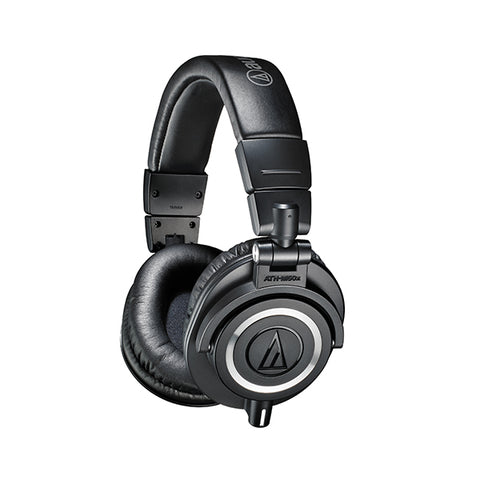
M50X
| Type | Closed-back dynamic |
| Driver Diameter | 45 mm |
| Magnet | Neodymium |
| Voice Coil | CCAW (Copper-clad aluminum wire) |
| Frequency Response | 15 – 28,000 Hz |
| Maximum Input Power | 1,600 mW at 1 kHz |
| Sensitivity | 99 dB |
| Impedance | 38 ohms |
| Weight | 285 g (10 oz), without cable and connector |
| Cable | Interchangeable cables: detachable 1.2 m – 3.0 m (3.9′ – 9.8′) coiled cable, detachable 3.0 m (9.8′) straight cable and detachable 1.2 m (3.9′) straight cable |
| Accessories Included | Protective carrying pouch, 6.3 mm (1/4″) screw-on adapter |
MSR7
| Type | Dynamic |
| Driver Diameter | 45 mm |
| Frequency Response | 5-40,000 Hz |
| Maximum Input Power | 2,000 mW |
| Sensitivity | 100 dB/mW |
| Impedance | 35 ohms |
| Weight | 290 g |
| Cable | Detachable 1.2 m (3.9′) standard cable, detachable 3.0 m (9.8′) standard cable, detachable 1.2 m (3.9′) cable with in-line controls and microphone for smartphones |
| Connector | 3.5 mm gold-plated stereo mini plug, L-shaped |
| Accessories Included | Protective pouch |
| Type (Microphone) | Condenser |
| Frequency Response (Microphone) | 50 – 4,000 Hz |
| Polar Pattern (Microphone) | Omnidirectional |
As you can see from the specs, the MSR7 features a wider frequency range, a lower nominal impedance, and a higher sensitivity. From this, it’s a safe bet that the MSR7 would give you more detail, an easier-to-drive experience, and a louder sound at the same volume – compared to the M50X. Both headphones use the same size driver – 45mm – so bass may still sound remarkably similar (though perhaps with a little more detail on the MSR7).
Low End
The low end on the M50X is good – and downright fantastic for the price. There’s a crunchy and well-controlled bass in there with plenty of “oomph.” While detail is good, it’s nowhere near the level found on the MSR7. Where the M50X is punchy, with a definite wow-factor to the bass, the MSR7 is more detailed, but with less impact. It’s a more refined sound, giving the impression of a richer and fuller sound. While this is great for a wider array of musical tastes, the M50X will clearly impress those who primarily listen to music with a driving beat – hip hop, rock, and EDM.
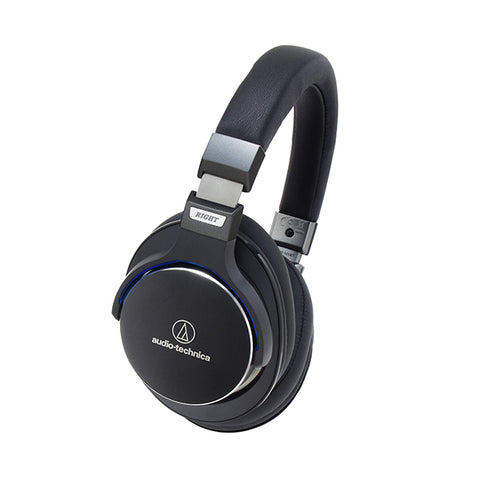
Mids
Mid-range detail on both of these headphones is great, with the M50X again playing second-fiddle to the MSR7. Don’t be mistaken, though – the midrange detail on the M50X is astounding for the price involved, and you’d be hard-pressed to find a better sound below $200. Meanwhile, the MSR7 offers a richer and fuller midrange, with more detail than you can shake a stick at. While this detail is impressive, it’s not quite on the same level of bang-for-your-buck as the M50X; other headphones like the Sennheiser HD25-1 II may offer a similar if not more-impressive level of midrange detail.
High End
While the M50X has been lauded by the headphone community for performance on a budget, as well as that impressive bass, many reviewers (and even some casual listeners) have picked bones with the high end detail. The sound, while good, can sometimes border on piercing – something that was immediately apparent when listening to anything with lots of strings, especially violins. In contrast, the MSR7 features more detail in a more controlled approach, being the least bit piercing, but still accurate.
Soundstage
Both headphones offer a real sense of space and definition to the music. While the M50X can sound just a little more compressed and congested, the MSR7 gives you a greater sense of scope – thanks in no small part to that wider frequency range. You can take this to mean that the MSR7 is more impressive in general, but you can also rest assured that both offer amazing soundstage at their respective prices.
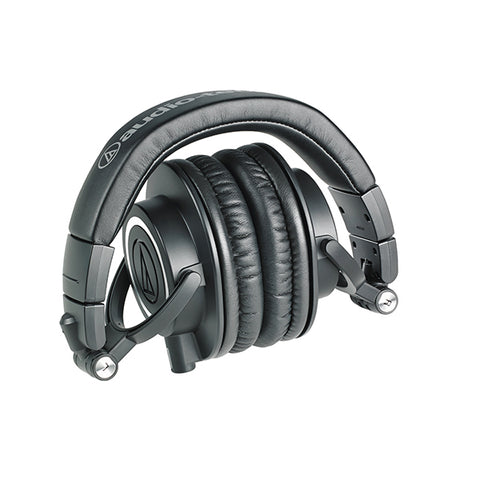
Professional or Consumer?
The big question, really, is which one to go with. Because, while both offer a fantastic level of audio quality, the end-use may easily recommend one over the other. The M50X is a very good “for the price” headphone – the things that are good about it will always pale in comparison to a more expensive, higher-end model (like the MSR7). But, when it comes to your budget, and what your budget dictates you to buy, the M50X is still worthy of every consideration. It’s no small wonder this small wonder has been kicking ass and taking names since it’s release – it gives you a great sound without breaking the bank.
With the MSR7, however, this philosophy is taken to a more extreme, more expensive level. It offers a rich, full sound just oozing detail. It’s as comfortable as the M50X, and just as isolating. And it offers (to those who need it) a mic and remote – something sorely missed by casual listeners when it came to the M50X.
Overall Impressions
Both of these headphones are strong performers. The M50X is definitely class-leading, while the MSR7 is more of a competitive performer offering creature comforts against more-detailed models that lack those same consumer-oriented features.
When it comes to actual sound quality (and if price were not an issue), the MSR7 easily wins any contest between the two. But with that in mind, the M50X deserves the hype because it made the hype; few headphones have seen this level of popularity because few headphones can actually give you this level of quality at such an affordable price.
If there were headphone junkies out there who said the M50X and wished for something more – more detail, more fashion sense, and more mic and remote – then the MSR7 is an answer to that.
Recommendations
If price is not an option, go with the Audio Technica MSR7 at $249.00. That phenomenal level of detail, matched with an appearance that is easy on the eyes and an in-line mic and remote, does much to recommend these headphones to almost anyone.
If a crunchy bass is your thing, or if you’re simply looking for the best performance you can get for under $200, the M50X isn’t on the list: it is the list. And it costs $169.
Receive a special discount when using code “welcome46” during checkout.
Get the Latest Headphone News and Reviews in Your Inbox
Subscribe to our newsletter and get 10% off your first purchase!*
*some restrictions may apply


 FREE Shipping
FREE Shipping
